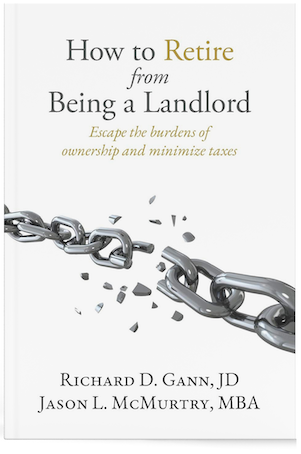
Your Previously Performing Real Estate Investment May Be Down. What Happened?
Your Previously Performing Real Estate Investment May Be Down. What Happened?
The Interplay of Interest Rates and Economic Factors on Real Estate Capitalization Rates
From its peak in spring 2022, the Green Street Commercial Property Price of institutional-quality investment real estate in the United States dropped by approximately 21%. There has been a slight uptick in Q1 2024, with the index now at 121.8 (April).i Ignoring the 2020 COVID dip, this drop in values reset the value of U.S. real estate back to July 2015. If occupancy rates for multifamily, industrial and retail properties have remained strong, what happened to real estate values (we all know what happened to office buildings)? To answer this question, one must understand the basics of cap rates.
Capitalization rates, commonly referred to as cap rates, play a pivotal role in determining the attractiveness—and ultimate financial performance—of real estate investments. Cap rates represent the yield expectations for a category of income-producing property relative to its market value. Understanding how interest rates and general economic factors impact cap rates is crucial for investors navigating the ever-changing landscape of real estate markets.
Interest rates, set by central banks and influenced by monetary policies, have a profound effect on real estate cap rates. When interest rates are low, borrowing costs decrease, making it more affordable for investors to finance real estate purchases. This increased demand for properties tends to drive up prices, causing cap rates to decrease. Real estate investors were forced to accept lower returns during our historically low interest-rate environment, as the risk premium over traditional fixed-income investments was not enough to push cap rates above a very low single-digit number.
Conversely, when interest rates rise, borrowing becomes more expensive, leading to a decrease in demand for real estate investments. Higher financing costs reduce the purchasing power of investors, causing property prices to adjust downward. Cap rates then will increase as investors demand higher returns. After all, why take the risk of investing in a property whose yield is lower than, say, a 10-year treasury?
Moreover, broader economic factors such as GDP growth, employment rates, and consumer confidence also influence real estate cap rates. In a robust economy with strong GDP growth and low unemployment rates, demand for real estate tends to be high. This increased demand puts upward pressure on property prices, causing cap rates to decrease. During economic downturns characterized by recessionary conditions and rising unemployment, demand for real estate may wane, leading to lower property values and higher cap rates as investors seek higher returns to mitigate risk.
Market supply and demand dynamics also play a crucial role in determining cap rates. In markets where supply outweighs demand, property prices may stagnate or decline, leading to higher cap rates. Conversely, in markets characterized by limited supply and high demand, property values may appreciate—causing cap rates to decrease—even during economic conditions that otherwise would not seem conducive to holding down cap rates. This is especially true where there are constraints on new construction or restrictive zoning.
Of course, investor sentiment and risk appetite also influence real estate cap rates. During periods of economic uncertainty or market volatility, investors may seek “safer” investment options, causing demand for some types of real estate to decline and cap rates to rise. In times of economic stability and optimism, on the other hand, investors may be more willing to accept lower returns, leading to lower cap rates.
Boiling this all down, the “spread” between Fed-driven interest rates and the average cap rate for a particular type of property is a function of 1) the amount of market capital available for real estate investment, and 2) the perceived operational risk of the property type. At the ground level, a property’s transactional cap rate will deviate from its categorical average based on location, property conditions and local demographics/economics.
Is it possible to preserve capital if future cap rates are higher than my purchase cap rate?
Across the board, cap rates for real estate reached their historic lows in the spring of 2022. If you invested in real estate near that time, it is likely that today your real estate is worth less, even if your occupancy rate is higher and your asking rents crept up. We simply cannot overcome the basic laws of algebra. If your property’s net operating income (NOI) is 6% higher, but the cap rate for your property is 20% higher, your market value has dropped. For example, if your property NOI was $50,000 two years ago, and you paid $1 million at that time, your purchase cap rate was 5.0%. Let’s suppose your NOI has increased to $53,000, but due to all the factors discussed above, the current cap rate for your property is 6.0%. This means a typical buyer today would pay only $883,333 for the same property, despite its higher NOI.
But all is not lost. Let’s suppose the Fed eventually lowers interest rates, the economy holds, and cap rates for your property type come down to 5.75% in seven years—still higher than your purchase cap rate, but better than today. If your NOI increases by 1.2% per year, your income in seven years will be $57,500, and an exit cap rate of 5.75% will generate a sale price of $1,000,000. Of course, to truly break even, your property would need to perform even better to overcome the transactional costs (commissions, fees, etc.) of buying and selling your property.
It is essential for real estate investors to carefully monitor interest rate movements and broader economic indicators to assess the potential impact on cap rates. Additionally, conducting thorough due diligence on market fundamentals and understanding local supply and demand dynamics can help investors make informed decisions in navigating the complexities of real estate investing. Most importantly, to avoid unnecessary heartburn, investors must appreciate the cyclical nature of investing while patiently recognizing the power of the Federal Reserve to impact the value of their real estate.
This information is for educational purposes only and does not constitute direct investment advice or a direct offer to buy or sell an investment, and is not to be interpreted as tax or legal advice.
Please speak with your own tax and legal advisors for advice/guidance regarding your particular situation. Because investor situations and objectives vary, this information is not intended to indicate suitability for any particular investor. The views of this material are those solely of the author and do not necessarily represent the views of affiliates. Statistical data contained in this material was obtained from third-party sources believed to be reliable; however, 1031 Capital Solutions, CIS, CAM, and CIA do not guarantee the accuracy of the information. Past history is not indicative of future results.
Investing in real estate and 1031 exchange replacement properties may involve significant risks. These risks include, but are not limited to, lack of liquidity, limited transferability, conflicts of interest, loss of entire investment principal, declining market values, tenant vacancies, and real estate fluctuations based upon a number of factors, which may include changes in interest rates, laws, operating expenses, insurance costs and tenant turnover.
Investors should also understand all fees associated with a particular investment and how those fees could affect the overall performance of the investment.
Securities offered through Concorde Investment Services, LLC (CIS), member FINRA/SIPC. Advisory services offered through Concorde Asset Management, LLC (CAM), an SEC registered investment adviser. Insurance products offered through Concorde Insurance Agency, Inc. (CIA). 1031 Capital Solutions is independent of CIS, CAM and CIA.
i https://www.greenstreet.com/insights/CPPI
continue reading
Related Posts
Changes are Happening Quickly – Don’t be Left Behind […]
White House Seeks Higher Taxes from Landlords In a significant […]










